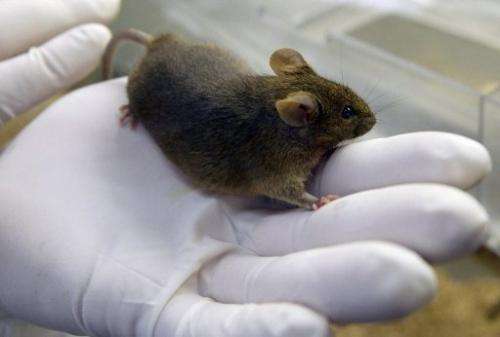Stem cell advance boosts prospects for retina treatment

Blind mice have been able to see once more in a laboratory exploit that marks a further boost for the fast-moving field of retinal therapy, according to a study published on Sunday.
Scientists in Britain used stem cells—early-stage, highly versatile cells—taken from mice embryos, and cultured them in a lab dish so that they differentiated into immature photoreceptors, the light-catching cells in the retina.
Around 200,000 of these cells were then injected into the mice's retinas, some of which integrated smoothly with local cells to restore sight.
The rodents were put through their paces in a water maze and examined by optometry to confirm that they responded to light.
Embryonic stem cells "could in future provide a potentially unlimited supply of health photoreceptors for retinal transplantations to treat blindness in humans," Britain's Medical Research Council (MRC) said in a press release.
Photoreceptor loss lies behind degenerative eye diseases such as retinitis pigmentosa and age-related macular degeneration, also called AMD.
Stem cells have triggered a huge interest and investment on the back of hopes that they can become replacement tissue, grown in a lab dish, for cells damaged by disease or accident.
But the exciting field has to overcome big obstacles.
One is the ability to coax these immature cells into safely becoming the specialised cells that are needed, rather than turn cancerous.
This is where the new work marks a gain, according to lead researcher Robin Ali at the University College London Institute of Ophthalmology and Moorfields Eye Hospital.
His team previously found that sight could be restored in blind mice by transplanting immature photoreceptors called rod cells that were taken from the retinas of healthy rodents.
The latest research takes things further because the transplanted material comprises all the different nerve cells needed for sight—and they were not taken from other animals.
Instead, they were grown in a lab and differentiated into the right cells thanks to a new technique, pioneered in Japan, that replicates the shape of the retina.
"Over recent years, scientists have become pretty good at working with stem cells and coaxing them to develop into different types of adult cells and tissues," said Ali.
"But until recently, the complex structure of the retina has proved difficult to reproduce in the lab. This is probably because the type of cell culture we were using was not able to recreate the developmental process that would happen in a normal embryo."
Ali added: "The next step will be to refine this technique using human cells to enable us to start clinical trials."
The study appears in the journal Nature Biotechnology.
Last month, Japanese authorities approved proposals for the world's first clinical trials using stem cells harvested from a patient's own body.
The goal is to test therapy for AMD using so-called induced pluripotent stem cells, or iPS.
These are adult cells that have been reprogrammed to return to their infant, versatile state. Provided that they are proven safe, they can provide a non-controversial alternative to stem cells culled from early-stage embryos.
© 2013 AFP


















